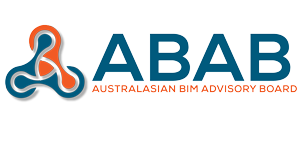ABAB March 2025 Communique: Paving the Way to 2030 in Digital Engineering and Sustainability
On Tuesday March 4th, ABAB convened for its first meeting of 2025. We kicked off with a warm welcome to our new members from Victorian Transport Digital Engineering as well as comprehensive updates from various regions, highlighting ongoing projects and initiatives. In their updates members shared insights on how digital engineering can support procurement processes, the integration of BIM methodologies, as well transitioning to a model-first deliverable approach. APCC and ACIF provided updates on the progress ABAB has made in its last nine years of operation, highlighting increased engagement across government and progress towards harmonisation.
ABAB’s 2025 Workplan maintained dedication to integrated best practice to BIM, consistent approach to digital enablement, advice on best practice and providing a whole of industry voice. While there is a strong knowledge hub within the group, there was a recognised need for greater alignment and standardisation to drive efficiencies and improve project outcomes. The importance of data consistency and robust data schemas was underscored as critical to achieving these goals. Chair Andrew Curthoys, noted, “We must focus on getting the right data, at the right time, and in the right hands to drive better project outcomes.”
We explored what the next five years look like in the digital environment and how ABAB can position itself to support developments and progress in the digital built environment. The meeting concluded with a look ahead to 2030, considering the future of digital engineering and the role of AI, automation, and data-driven decision-making. The importance of engaging with educational institutions and upskilling the workforce was emphasised to ensure the industry is prepared for the challenges and opportunities ahead. Andrew Curthoys emphasised, “Engaging with educational institutions and upskilling our workforce is crucial to prepare for the future.”
The role of digitalisation in decarbonisation efforts was also discussed, with a focus on how digital tools can help track and reduce CO2 emissions. “Digitalisation and decarbonisation go hand in hand, and we must leverage digital tools to achieve our sustainability goals,” Andrew Curthoys said.
Updates on various projects and ongoing initiatives were provided, including the ABAB Industry Collaboration Working Group, Women in BIM, Sustainable Built Environment National Research Centre, and contributions to the National Construction Strategy.
Overall, the meeting was a productive exchange of ideas and updates, reinforcing the collaborative spirit and shared commitment to advancing digital engineering practices over the next 5 years.
________________________________________________________________
The Australasian BIM Advisory Board established by the Australasian Procurement and Construction Council (APCC) and the Australian Construction Industry Forum (ACIF), together with the key standard-setting bodies, NATSPEC, buildingSMART and Standards Australia, promotes best practice and consistent approaches to BIM practices, standards, and requirements. ABAB guidance materials are available at: Australasian BIM Advisory Board (abab.net.au).


0 Comments Leave a comment